Honoring the Legacy of Falconry with a Commemorative Event
hace 3 weeksToday at Terra Natura Benidorm, we held a special event to unveil an educational poster that highlights the role of birds of prey in aviation risk prevention—both civil and military. This initiative, spearheaded by Dr. David Santacreu Fernández, falconer and honorary collaborating professor at Miguel Hernández University, aims to shed light on the historical legacy of falconry while demonstrating its modern-day relevance in ensuring flight safety.
Falconry, recognized by UNESCO as Intangible Cultural Heritage of Humanity, takes center stage in this project. The newly inaugurated poster is designed to engage visitors with the ancient art, celebrating its deep cultural roots and emphasizing its current application in reducing bird strikes at airports.
The event was opened by Terra Natura Benidorm’s General Director, Luis Perea, and attended by notable figures including Mónica Gómez, Councillor for the Environment of Benidorm Town Council; Colonel Juan Navarro Ferrández, Provincial Subdelegate of Defence; Captain José Luis Segundo Serrano, Chief of Flight Safety at the Alcantarilla Air Base; Carlos Fabra Dolz, Executive Service Representative from AENA; María del Carmen Perea Marco, Director of the Didactic and Interactive Science Museum (UMH); and Dr. David Santacreu himself. Perea also expressed his appreciation to the park’s falconry team, Águilas del Sol, for their enthusiastic participation and for showcasing several magnificent birds of prey during the event.
The informative poster—on loan from the Didactic and Interactive Science Museum (UMH) and the Spanish Air Force—offers a detailed overview of the issue of bird strikes and how falconry is effectively used to mitigate these risks. The display includes compelling data, such as the more than 2,000 bird strike incidents reported annually in Spain and the estimated 1 billion euros global economic impact. It also features scientific explanations of the force involved in bird collisions, compares the impact to the weight of a heavy vehicle, and details the species of raptors used, their training, veterinary oversight, and the measurable success of this prevention method.
The event also featured a video message from Odile Rodríguez de la Fuente, daughter of renowned naturalist and science communicator Félix Rodríguez de la Fuente. In her message, she highlighted the “important and often invisible” role falconers play in aviation safety. She recalled how her father pioneered the use of falconry in Spanish airports through “Operation Baari,” initially launched at Torrejón Air Base in collaboration with the U.S. military and later implemented at Madrid-Barajas Airport. Her words underscored the enduring bond between humans and birds of prey—a partnership that continues to save lives by significantly reducing the risk of bird-aircraft collisions during critical flight phases.
In his address, Dr. David Santacreu—the driving force behind this initiative—emphasized the extraordinary value of falconry as one of the oldest and most distinctive alliances between humans and wild animals. He described it as an ancient art that has captivated civilizations across the globe, from European royalty to monarchs of the Arab world. At its core, he explained, falconry is based on a relationship of mutual respect between falconer and bird of prey—free from dominance or subjugation.
Dr. Santacreu also highlighted the modern-day relevance of falconry as both an educational and technical tool. It serves to connect the public with the fascinating world of raptors and to raise awareness about their vital role in ecosystems. On a practical level, he noted, falconry plays a key role in wildlife control at airports, helping to reduce the risk of bird strikes. He took the opportunity to commend Terra Natura Benidorm for its dedication to the care of birds of prey and for offering a valuable platform to share this ancient practice in a rigorous yet accessible way. He also extended his sincere thanks to all participating institutions for their support and commitment to this educational initiative.
During the event, Colonel Juan Navarro Ferrández, Deputy Delegate of Defence in Alicante, praised the newly inaugurated poster as a meaningful tool for promoting a culture of defense and as a symbol of successful collaboration between civil society and institutions. In a similar vein, Captain Juan Luis Segundo Serrano, Flight Safety Officer at the Alcantarilla Air Base, reiterated the continued importance of falconry in military aviation, where it plays a vital role in preventing bird-aircraft collisions during take-off and landing—an effective yet still little-known aspect of air safety.
Carlos Fabra Dolz, Service Executive at AENA, described falconry as “the star strategy at airports” for managing wildlife hazards. He recalled the origins of the collaboration between falconers and aviation professionals and highlighted the effectiveness of this method, particularly at high-traffic airports like Alicante.
María del Carmen Perea Marco, Director of the Didactic and Interactive Science Museum (MUDIC) at Miguel Hernández University, emphasized the poster’s role as a symbol of cross-institutional cooperation. “This project represents the intersection of science, applied knowledge, and public institutions. It’s a clear example of how outreach can build bridges between the military, the research community, and civil society,” she said.
Mónica Gómez, Councillor for the Environment at Benidorm Town Hall, expressed her support for the initiative as a continuation of Terra Natura’s commitment to sustainability and environmental education. “This poster is yet another example of the park’s awareness-raising efforts. It will surely catch the attention of many visitors, encouraging them to learn about the environmental and preventive benefits of falconry,” she stated.
Closing the event, Raúl Mérida, Regional Secretary for the Environment and Territory, shared a video message in which he applauded both the event and Dr. Santacreu’s dedication to public education. He praised falconry as a traditional practice that seamlessly combines deep ecological knowledge with sustainable land management.

